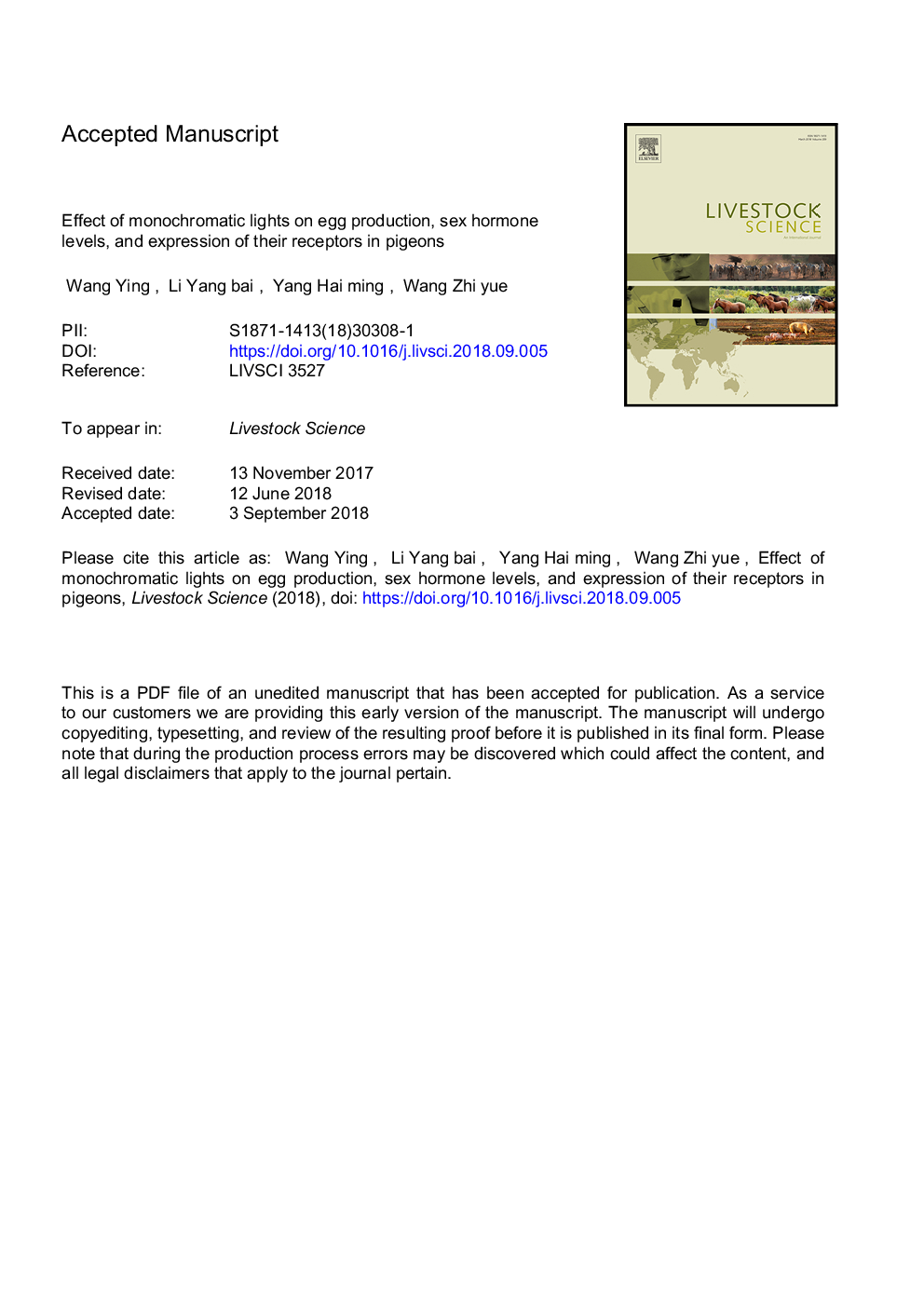| Article ID | Journal | Published Year | Pages | File Type |
|---|---|---|---|---|
| 9954650 | Livestock Science | 2018 | 21 Pages |
Abstract
This study evaluated the effects of monochromatic light on egg production, egg weight, fertility rate, plasma sex hormone levels, and their receptor mRNA levels in the HPG axis of pigeons. Sixty paired adult White King pigeons were randomly divided into four groups, exposed to violet light (VL), green light (GL), red light (RL), or white light (WL). Exposure to monochromatic light comprised 16â¯h of light, every 24â¯h for 100 days. Nine paired pigeons from each group were selected for estradiol (E2) and testosterone (T) analysis, and 24 paired birds were randomly selected from the four groups for ERβ and AR expression analysis. Results showed that RL increased egg production more than WL and VL (P < 0.05). No significant difference was observed in egg weight or fertility rate of birds exposed to monochromatic light (P > 0.05). Plasma E2 in female pigeons exposed to RL was higher than that in those exposed to VL (P < 0.05). No significant difference was noted in plasma T levels in male pigeons (P > 0.05). In females, GL increased ERβ mRNA levels in the pituitary (P < 0.05), and RL significantly increased ERβ expression in the ovary (P < 0.01). In males, RL induced the highest AR mRNA levels, and WL induced the lowest levels in the pituitary and testis (P < 0.01). In conclusion, the results suggest that RL improves egg production, and enhances E2 concentration, ERβ expression in the ovary, and AR expression in the pituitary and testis.
Related Topics
Life Sciences
Agricultural and Biological Sciences
Animal Science and Zoology
Authors
Wang Ying, Li Yang-bai, Yang Hai-ming, Wang Zhi-yue,
